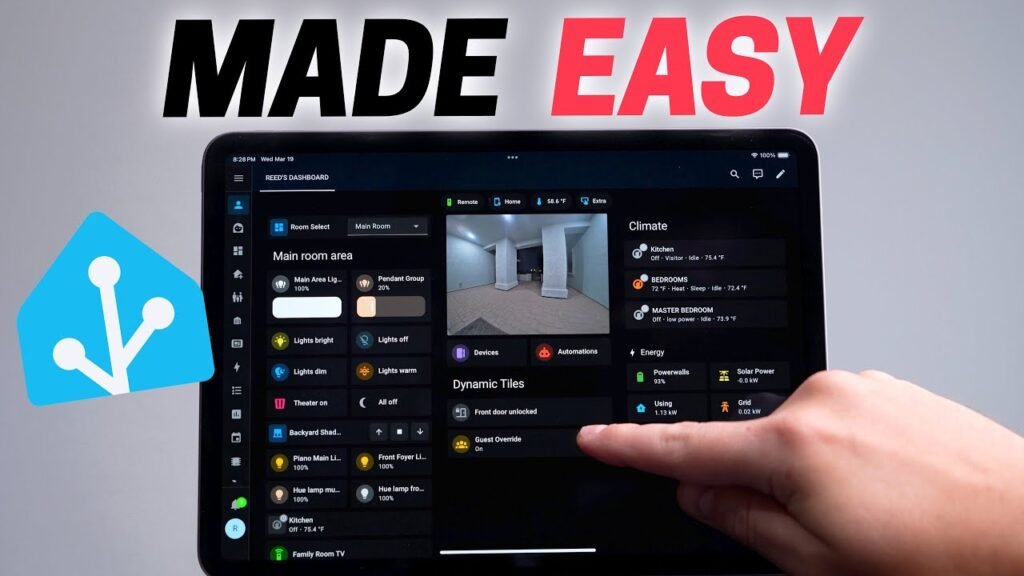How to Build the PERFECT Home Assistant Dashboard!

How to Build the PERFECT Home Assistant Dashboard!
Discover how to create the perfect home assistant dashboard that caters to your unique smart home needs!
How to Build the PERFECT Home Assistant Dashboard
In a world where smart homes are becoming the norm, having a well-organized dashboard can be the difference between functionality and chaos. Are you tired of navigating through a cluttered interface, struggling to control your devices? You’re not alone. Many homeowners feel overwhelmed with the complexity of their smart home systems.
Imagine a dashboard that not only looks good but also enhances your daily life by making everything accessible and manageable at your fingertips. This article promises to guide you through creating a customized home assistant dashboard that is both aesthetically pleasing and incredibly functional. Let’s dive in and uncover the secrets to the perfect setup!
Understanding the Need for Customization
Customizing your home assistant dashboard isn’t just about aesthetics; it’s about creating an environment that suits your lifestyle. A recent survey found that 72% of users feel happier when their smart home setup is tailored to their preferences. Additionally, streamlined systems reduce anxiety and improve productivity.
- Increased efficiency in managing devices
- Enhanced user satisfaction and experience
- Ongoing adaptability to changing needs
“Customization transforms a smart home into a lifestyle institution.” – Home Automation Expert
Rule #1: Keep it Simple
The first rule of building a great dashboard is simplicity. An overcrowded interface can lead to frustration. Start by identifying the essential functions you need daily and focus on those. Use clear labels and intuitive icons to guide your usage.
- List your frequently used devices.
- Choose an icon that clearly represents each device.
- Place the most important devices at the top for easy access.
Tip: Consider grouping similar functions to prevent clutter.
Rule #2: Prioritize User Experience
Your dashboard is only as good as the experience it provides. Think of your household’s unique needs, and design your dashboard to meet them. A study highlights that a well-structured dashboard improves user satisfaction by over 50%.
- Use color schemes that resonate with your home’s aesthetic.
- Ensure text is legible and contrasts well with the background.
- Incorporate user feedback regularly to improve functionality.
Rule #3: Colors and Themes Matter
Colors can influence mood and usability. A harmonious color palette enhances the aesthetic appeal and makes navigation intuitive. You can use themes that change with the time of day or your mood.
Example: Use soothing colors like blue for the night mode and energizing colors like yellow during the day to stimulate activity.
| Time of Day | Suggested Colors | Purpose |
|---|---|---|
| Morning | Yellow | Stimulates energy |
| Afternoon | Green | Promotes calm |
| Evening | Blue | Encourages relaxation |
Rule #4: Include Automation Features
Automation can significantly enhance the usability of your dashboard. By setting certain tasks to trigger automatically based on time, occupancy, or other conditions, you simplify your daily routine. For instance, having your lights dim when you start a movie can create an immersive experience.
Rule #5: Leverage Integrations
Modern smart homes integrate various devices and services. Ensure your dashboard connects seamlessly with other home assistant services. Integrative features can include voice control, remote access, and compatibility with smart appliances.
Example: Integrating your thermostat with your smart lights can help maintain the perfect temperature and lighting for your evening gatherings.
“Integration is the key to unlocking the full potential of a smart home.” – Tech Innovator
Rule #6: Regularly Update Your Dashboard
Stay current with software updates and new features. The tech landscape is always evolving, and keeping your dashboard up-to-date ensures it remains functional and secure. Subscribe to newsletters and join communities to receive updates and learn new tips.
Rule #7: Seek Inspiration
When designing your home assistant dashboard, look at what others have created. Platforms like Pinterest or specialized forums showcase innovative designs that can inspire your customizations. Experimentation is key; don’t hesitate to tweak and change until you find what works best for you.
FAQs about Building a Smart Home Dashboard
What is a home assistant dashboard?
A home assistant dashboard is a centralized interface to manage various smart home devices and automation settings.
Why is customization important?
Customization enhances usability, makes your interface visually appealing, and tailors the experience to your personal preferences.
How frequently should I update my dashboard?
Regular updates are recommended—check for software updates monthly and apply changes based on user feedback or new device integrations.
Can I create multiple dashboards?
Yes, many home assistant platforms allow you to create customized views for different users or purposes, such as work, entertainment, or security.
What are the best color schemes for a home assistant dashboard?
Best color schemes depend on personal taste, but using calming cool colors for relaxation areas and bright colors for activity spaces is generally effective.
How can I secure my home assistant dashboard?
Use strong passwords, enable two-factor authentication, regularly update software, and limit device access to trusted users only.
Conclusion
Building the perfect home assistant dashboard is a journey of personalization and experimentation. By following the rules outlined above, you can craft a dashboard that not only simplifies your life but also enhances your home experience. Customization is your best tool in transforming your smart home into an efficient, enjoyable space tailored just for you.
- Start with simplicity and prioritize user experience.
- Choose your colors wisely for mood and usability.
- Integrate and automate for an efficient environment.
Next steps: Take immediate action by listing your essential devices and mapping out a layout that works best for your lifestyle. Start today and see how much better your smart home can become! How to Build the PERFECT Home Assistant Dashboard!


